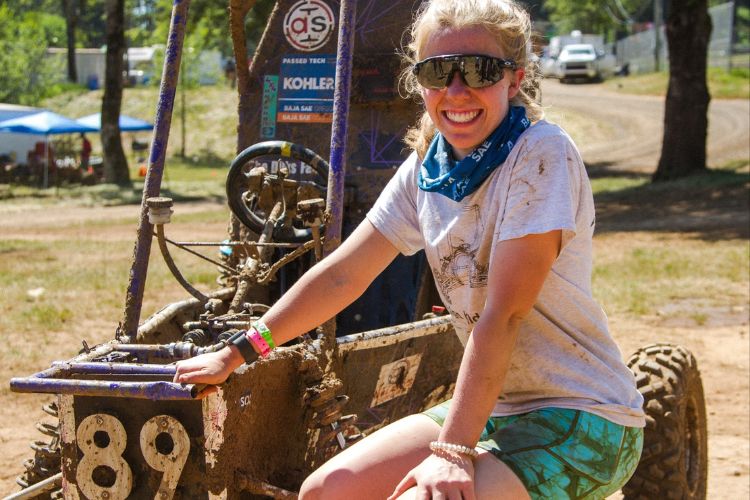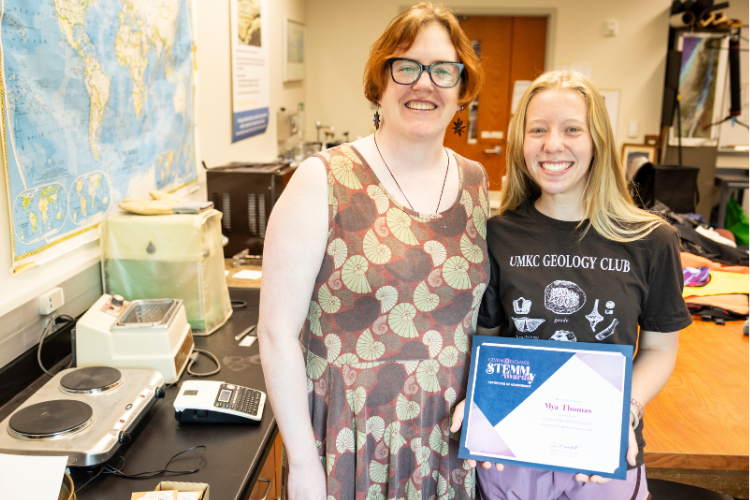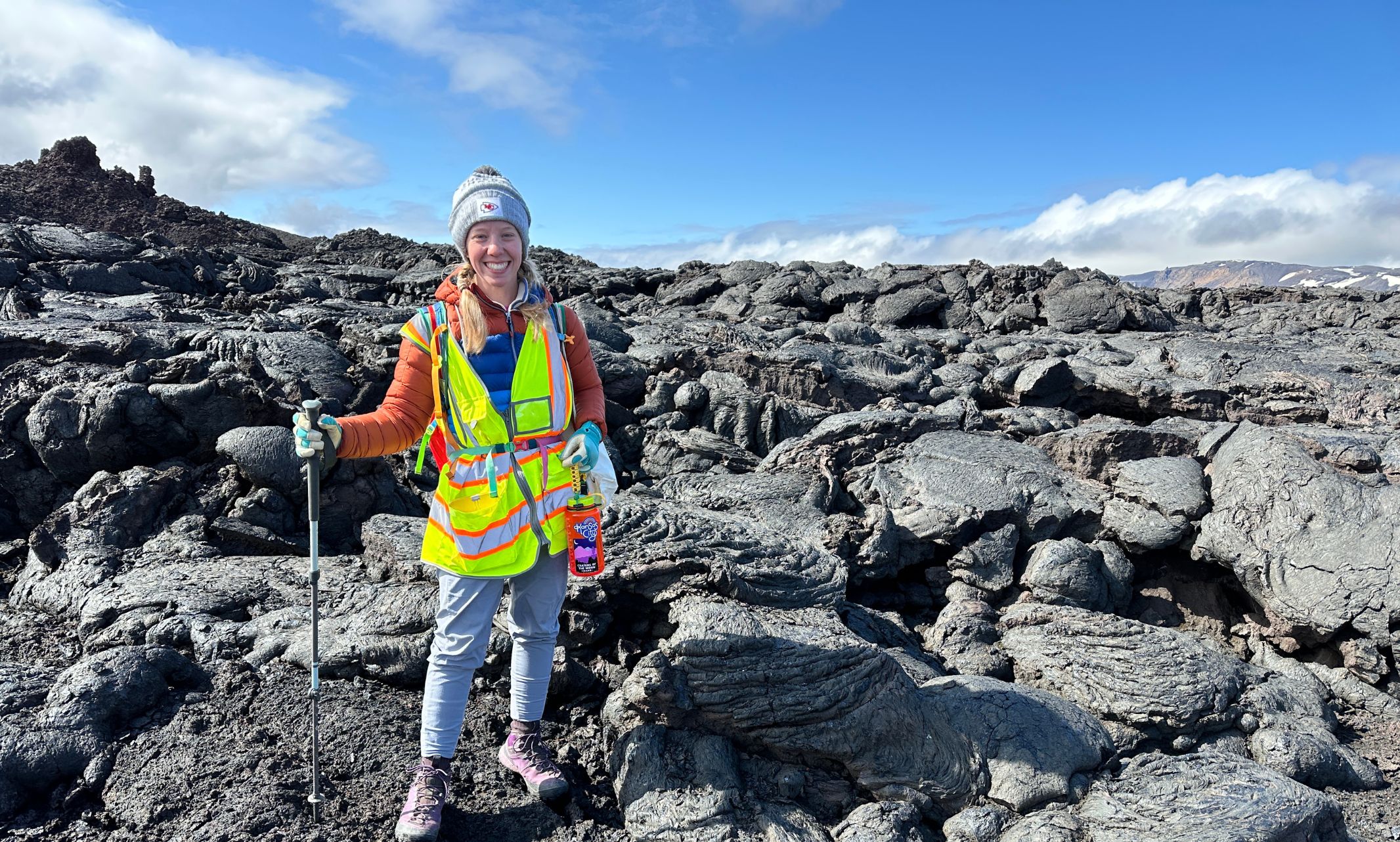Conducting research in Iceland, presenting to NASA and working with Baja Buggies. That’s the typical college experience for Mya Thomas, who loves a hands-on approach in the STEM field. We sat down with the Science and Engineering student to learn exactly what gets her gears going.
What inspired you to pursue your major?
My major is a Bachelor of Science in Earth and Environmental Science with a geology emphasis. I am pursuing minors in astronomy and physics as well as a certificate in Geographic Information Systems. I love exploring the natural world and learning about geologic processes I can observe with my own eyes in the field. I decided to add on minors in astronomy and physics because I want to specialize in planetary geology. It has always been a dream of mine to work for NASA and help plan missions to extraterrestrial lands.
How and why did you get involved with WiSci?
During my freshman year, I first discovered Women in Science through an alumna that now works with NASA. She said that WiSci was a wonderful and supportive environment for her to be a part of while she was at UMKC. I started off as a general member, but then was elected vice president the next semester and here I am as president about a year later. Since being involved with WiSci, I have gained a passion for making STEM more accessible and success in it more achievable.

How and why did you get involved with Baja Buggy?
I joined the Baja Racing Team my freshman year because I thought it was cool! My dad has always been a fan of NASCAR and I grew up riding go-karts with him, so I developed an interest in cars and racing.
As the current president, I approach this role with a mission to, again, make STEM more accessible and approachable to non-majors. The executive team is composed of all non-engineering students, and we have leads from each engineering discipline at UMKC. I quickly learned how important it is to foster a supportive atmosphere, put trust in your team, and just ask the question when you have it.
What do you plan to pursue post-grad? Why?
Once I graduate from UMKC, I am going off to grad school to study planetary geology and continue building an interdisciplinary background in STEM. My dream career is to be on a mission planning team at NASA. I am most interested in being a part of a team that develops scientific data collection and analysis plans for a mission to planets or asteroids in our solar system. Mission planning teams at NASA are as interdisciplinary as you can get.
Why is the representation of women in science important? What does it mean to you?
Learning about science in school, I only recall hearing about Albert Einstein, Isaac Newton, Charles Darwin and Galileo. It wasn’t until late high school that I learned about famous female scientists like Marie Curie, Katherine Johnson and Mary Anning. Growing up with this narrative of science being a man’s field made it feel deviant to be interested in pursuing a career in STEM.
I don’t want young girls to feel intimidated to pursue a career in STEM. I want young girls to grow up and maintain their curiosities in science and carry that into their career paths. Building a more encouraging atmosphere around STEM would open the industry to so many more diverse perspectives.
Do you have any advice for women thinking of pursuing a STEM field?
My biggest piece of advice would be to branch out and try new things, more so if you are intimidated. Not only will you grow as a student when you step outside of your comfort zone, but also as a human being.
Do you have any current mentors who have inspired you?
Hands down,the MELT team at UMKC. The MELT team is a volcanology research team led by Alison Graettinger, Ph.D. in the Natural and Build Environment Division in the School of Science and Engineering at UMKC. Graettinger has been an incredible mentor to me regarding both my undergraduate research pursuits and my general career path. She is passionate about facilitating her students’ success. The path I am on feels so much more fun with Graettinger and the MELT team by my side.

Thomas' incredible academic achievements and student involvement on campus with organizations such as Women in Science and Baja SAE has not gone unrecognized, with her receiving the 2024 Central Exchange Student Achiever STEMMy Award.
She is also the grand prize winner of the 2024 AGU Michael H. Freilich Data Visualization Competition. The award provides an opportunity for students to demonstrate creative ways to visualize data and present complex problems in the Earth, space and related scientific disciplines and advance their ability to communicate science with broad audiences. Thomas will get the chance to present on the NASA hyperwall at the 2024 American Geophysical Union Annual Meeting this December in Washington, D.C.

